Potato Farming Process – Cultivation, Planting & Harvesting
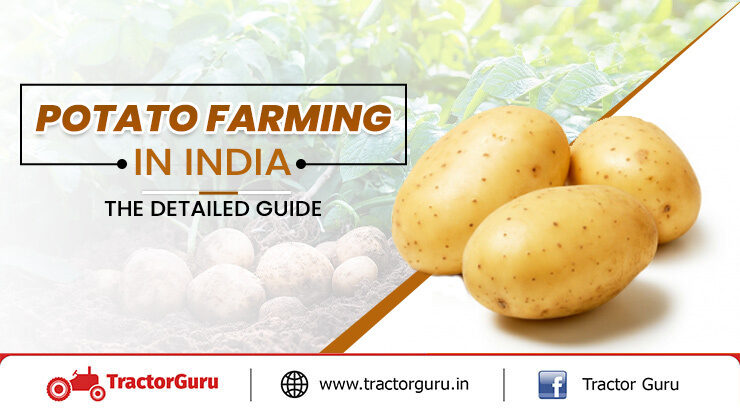
Potato is a staple food crop, and it is used in a variety of cuisines. A large chunk of the world’s population consumes this vegetable on a daily basis. Moreover, the reason behind such large consumption of potatoes is due to their compatibility with any other vegetable. Thus, it holds 4th place in terms of crucial food crops. Apart from being a tasty vegetable, Potato also proves to be a profitable crop. Potato Cultivation or large-scale potato production is helping farmers generate a higher income. With the latest technology and modern farming techniques, potatoes can give a significantly higher yield, resulting in more income than other crops.
Uses Of The Potato Crop – Potato Farming
Potatoes come from the Solanaceae family, and people eat them in large quantities. Therefore, potatoes come with loads of essential nutrients. These include minerals, vitamins C and B6. Also, potatoes have starch, protein, essential fat and carbohydrates. Therefore, they are a pocket-friendly energy source for everyone.
Moreover, Potatoes are used in different other commercial fast foods, such as potato chips or fries. Hence, fast-food chains hugely demand this vegetable as they use potatoes in large quantities to serve the consumers’ needs. It is also used to make starch and alcohol for commercial needs.
Know About – Perennial Crops Farming Types and Benefits
Potato Cultivation In India
India is one of the largest growers of potatoes in the world. A large part of the Indian population depends on potato cultivation due to its profitable income. Also, new farmers are adapting to the farming of potatoes as this crop does not require much investment. Therefore, we are giving you a complete guide for potato cultivation. So, read this blog till the end to know the entire process of potato harvesting time, planting and caring. Moreover, you will also know the profits by the yield of potatoes.
Potato Farming Fun Facts
- Potatoes are available in more than 1000 varieties.
- Potatoes are grown in more than 100 nations around the world.
- This crop comes from the same family as tobacco.
- Potatoes were the crop successfully grown in space.
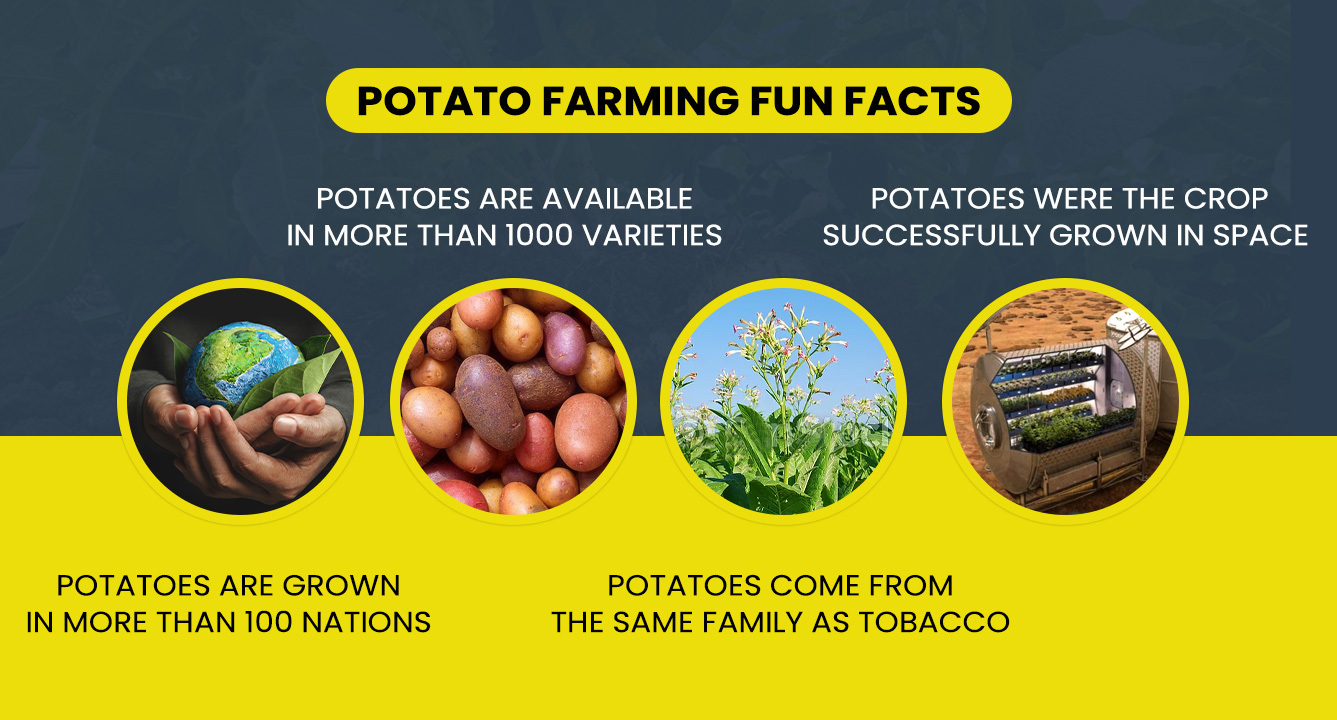
Popular Potato Production States in India 2024
According to the statistics for the fiscal year 2021, the following are the states that are major Potato Growing Stages:-
1. Uttar Pradesh
This state produced 15.81 million metric tons of Potatoes in the year 2021.
2. West Bengal
West Bengal grew a total of 13.2 million metric tons of Potato, holding the second place for potato production in 2021.
3. Bihar
Bihar comes third for potato cultivation in India, producing 9.04 million metric tons of Potato.
4. Gujarat
Gujarat is fourth for the cultivation of potato. This state produced 3.89 million metric tons of potatoes.
5. Madhya Pradesh
This state cultivated 3.57 million metric tons of potatoes, holding the fifth place for Potato production.
6. Punjab
Punjab was sixth for growing potatoes, cultivating 2.95 metric million tons.
7. Assam
This state produced 0.99 million metric tons of potatoes, achieving seventh place for potato cultivation.
8. Jharkhand
Jharkhand was eighth in terms of Potato production by growing 0.77 tons of potatoes in India.
Types of Potatoes Varieties in India
The popular and profitable types of potatoes in india varieties are Kufri Pukhraj, Kufri Jyoti, Kufri Bahar, Bhura Aloo, Kufri Chipsona, Kufri Sindhuri, Kufri Arun, Kufri Chandramukhi and Kufri Khyati. These potato varieties are profitable. Thus, farmers highly recommend these potato varieties.
Fun Fact – Kufri Sindhuri is the most-produced potato variety in India.
Suitable Soil & Climate For Potato Farming
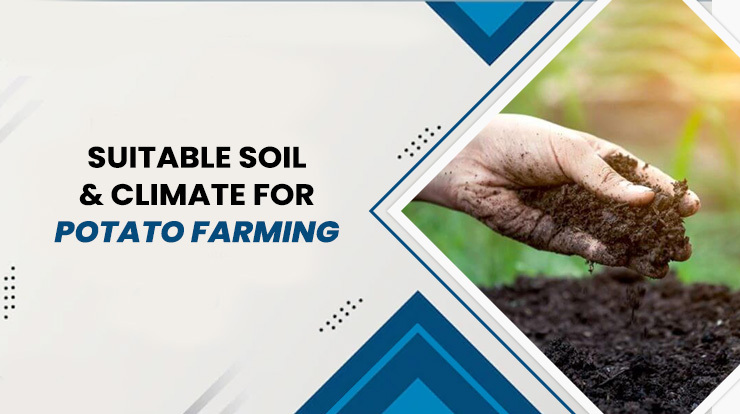
Potatoes require soil with proper drainage. Thus, we should avoid waterlogged land in Potato farming. In addition, alkaline and saline soils damage the potato plants. Therefore, a farmer should use naturally loose soil for sufficient tuber growth. In conclusion, sandy and loamy soil with organic waste and enough aeration are suitable for potato cultivation. The preferred pH value of the soil is 5.2 to 6.4, which helps in proper plant development. Talking about the climate, a 24℃ temperature is ideal for the production of potatoes, and the tubers need a 24℃ temperature. Hence, a temperature range anywhere between 14°C to 20°C is suitable for high yield.
Preparing The Land For Potatoes Crop Duration
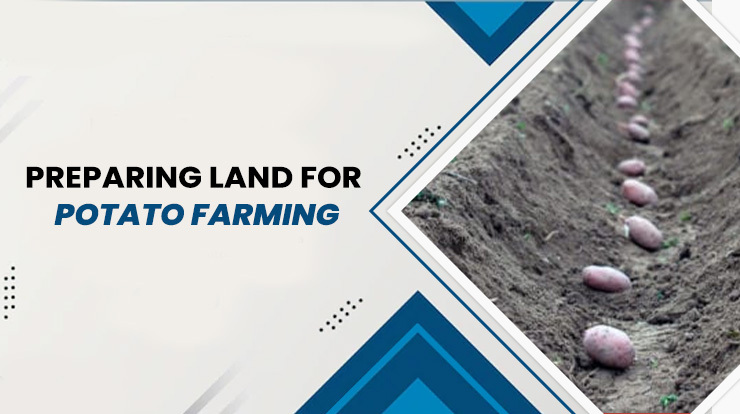
In Potato agriculture, land preparation is a crucial step for high-quality yield. Firstly, we should plough about 2 to 3 times to remove the unwanted plants and bring out the soil nutrients in deep layers. Then we should do harrowing three times, which makes the soil friable. After this, the field needs levelling with the help of planks. Moreover, it is necessary to ensure proper moisture content in the soil.
If You Want to Buy a Best Tractor for Farming Click Here
Potato Cultivation Sowing Season And Method
Potatoes are produced under a cold temperature region as it is a suitable condition for their growth. However, the potato sowing harvest season varies according to the different locations. For example, the spring crop sowing season is from January to February in Uttar Pradesh and Himachal Pradesh. On the other hand, the summer potato crop is sown in May. But, in Maharashtra and Madhya Pradesh, its sowing takes place by the end of June. At the same time, potatoes are sown as rabi crops from October to November.
Techniques Of Potato Farming
Potatoes are best grown in rows. And each row should at least have a distance of 3 feet between them. Moreover, for proper growth, you can make a 6 to 8 inches deep trench and plant each Potato with a 12 to 15 inches spacing between them. This is one of the popular potato farming methods in which the tubers are sown. Hence, we do not need to treat the seeds for Potato cultivation. Also, the soil requires mounding for the even distribution of nutrients. Note that in these potato cultivation techniques, we must ensure the use of a cultivator for better tilling.
Apart from this, if we want to grow potatoes from seeds, we must provide the soil with organic waste and rotted manure. Then, plant the potato seeds at a distance of one foot and a depth of 4 inches.
Plant Care In Potato Farming
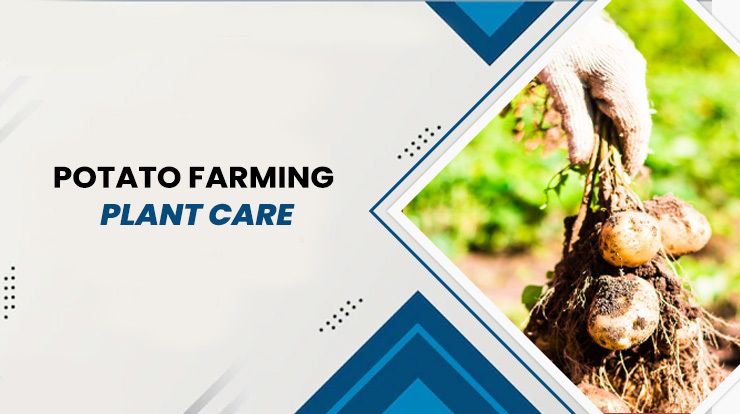
It is crucial to grow any crop with proper care. Therefore, we must ensure the suitable amount of fertilizer management and the right time of irrigation. By following these steps, we can achieve a higher yield for more profits. Below are the irrigation and fertilizer needs for the Potato plant.
Irrigation Requirements
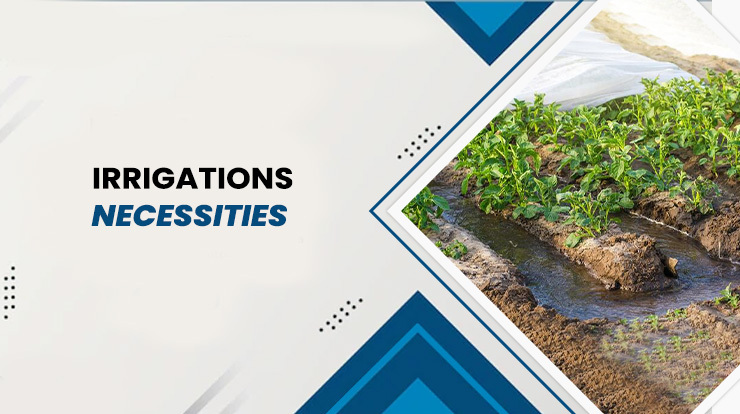
Potato crop needs proper watering in the summer season. Therefore, we must ensure sufficient irrigation at the time of flowering and later stages. Moreover, the tubers also form in the flowering period. Therefore, the irrigation needs of potatoes are higher. This crop requires water regularly without interruptions. Thus, we must keep watering the potato plants until the water level reaches 1 to 2 inches. Rainfall in potato cultivation also helps in achieving a higher yield. Note that we must stop watering the plant when the leaves become green and start to wither. This will result in quicker healing of the damaged plants, leading to a good-quality yield.
Fertilizer And Manure
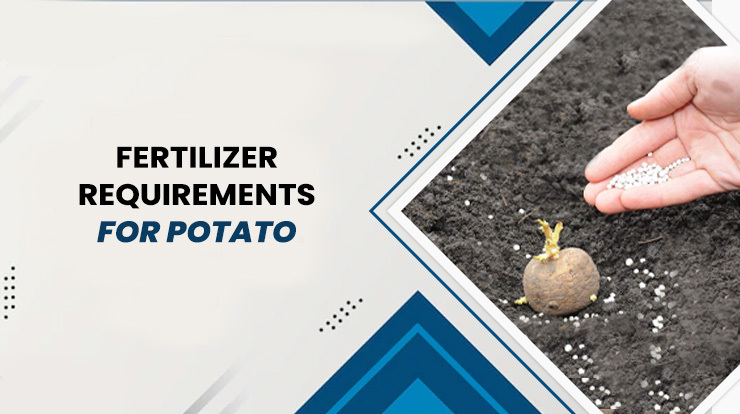
Fertilizer requirement in potato cultivation varies according to the different varieties of soil. For instance, volcanic soils contain a smaller amount of phosphorus, so we must provide fertilizers to fulfil the phosphorus deficiency. However, the application of organic fertilizers at the initial stage will help us to achieve a high-quality output from potato crops. This is because organic fertilizers offer better soil structure and sufficient nutrition for plant development. Along with this, the fertilizer quantity depends upon the size of the crop field.
Regarding the manure needs for potatoes, we can use composted manure, such as animal waste. Firstly, apply compost to the soil in the autumn season before sowing and let the microbes simplify the composition of necessary nutrients for easier absorption. Then, distribute the manure evenly on the entire potato field. Later, a thorough ploughing is needed to make the soil suitably tilled.
Potato Harvesting Process
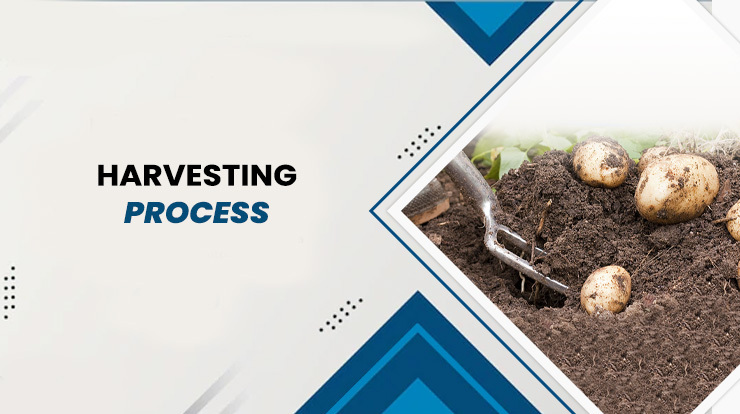
- The ideal harvesting time for potatoes is three to four months after sowing, depending on the area of planting, soil variety and nature.
- In hilly areas, potato crops are normally harvested when the soil does not have much moisture.
- To obtain potatoes, carefully dig around the plants for high-quality yield but remember to be very gentle.
- Try to remove the bigger-sized potatoes and leave the smaller potatoes as it is to continue growing.
- When leaves become yellow and dry, we can harvest the potato crop.
- Before the harvesting process, apply irrigation, and the harvesting is done when the soil becomes dry.
Final Words
In this way, we have described the complete potato cultivation process with numerous potato planting methods. Moreover, the blog covered all the varieties of potatoes. Also, we can adapt small-scale potato farming with the right tools and resources. Furthermore, various new techniques, such as aeroponic potato farming, are popular. This blog will help you solve all your concerns regarding the potato cultivation process. Stay tuned with Tractor Guru as we offer informative farming blogs.
Related Blog
Tomato Farming Tips In India
Apricot Farming Varieties and Benefits



